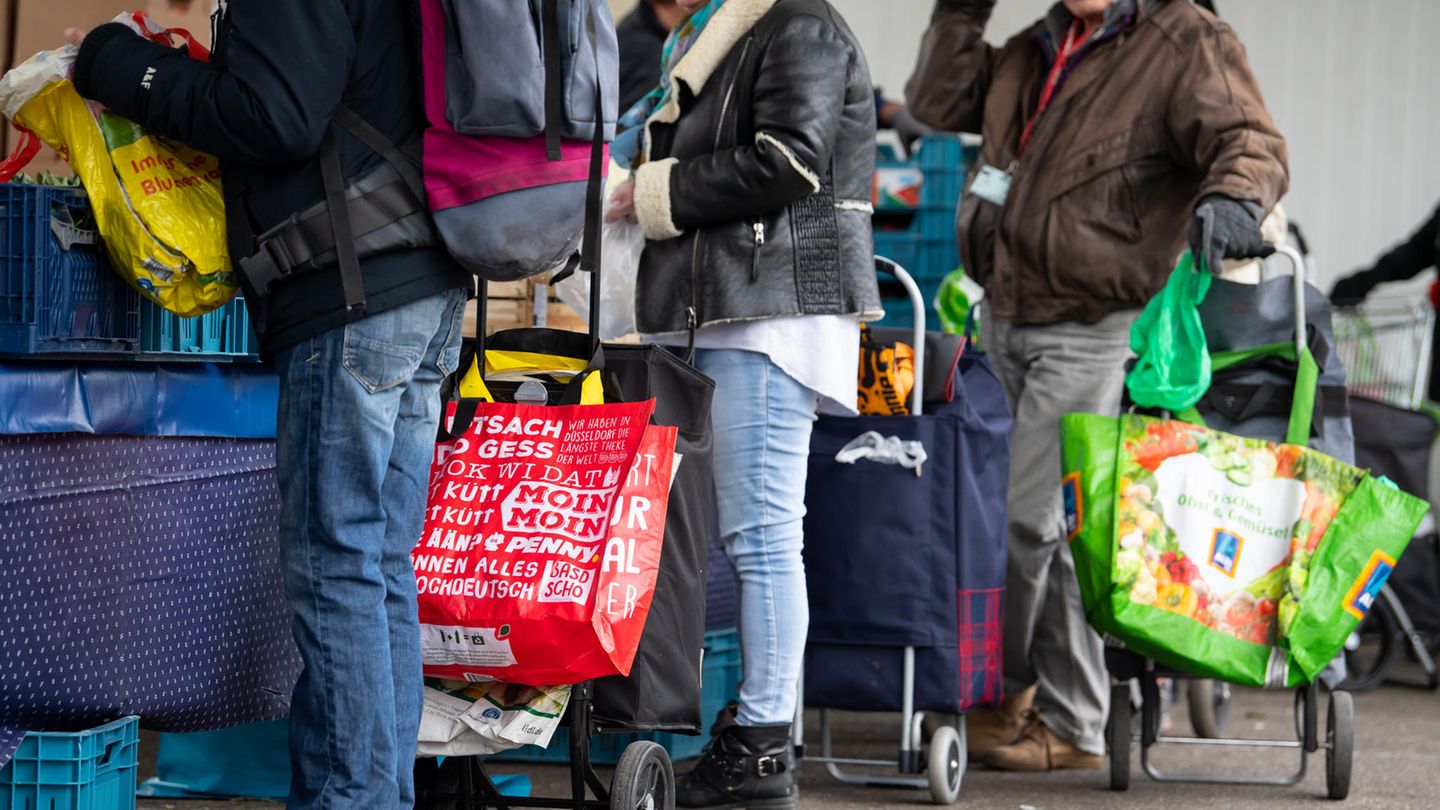Social inequality was already growing at the beginning of the millennium. The pandemic has now exacerbated this problem: Households of the lower middle class and poorer households in particular lost over 50 percent of their salaries, according to a report.
The corona pandemic could have put an end to a decade of increasing stability and perceived security in the German middle class. According to the distribution report presented on Wednesday by the Economic and Social Science Institute (WSI) of the union-affiliated Hans Böckler Foundation, around half of the middle class reported a loss of income as a result of the pandemic. Accordingly, poorer households were particularly often affected by pandemic-related income losses. This could lead to increasing social inequality, warned the WSI.
In the past 20 years or more, there has been a mixed but recently positive trend with regard to income inequality: Inequality rose significantly at the beginning of the 2000s and then stagnated at a high level. Inequality reached new highs by the mid-2010s, and then decreased somewhat again from 2017. The conclusion of the study authors: Despite increasing globalization, the middle class, defined as households with an income between 1500 and 3500 euros per month, did not come under additional pressure.
In addition to the increasingly better labor market situation, this development was also reflected in the worries and fears of the middle class: Between 2010 and 2019, the number of people who were worried about losing their jobs halved, from 54 to 30 percent. Concerns about their own financial situation and retirement provisions also decreased.
Work is no guarantee of security
For poorer households and part of the middle class, however, this positive trend could have been reversed as a result of the corona pandemic, the WSI warned. Households with an income of up to 1,500 euros were particularly often affected by a loss of income due to pandemics (a good 62 percent). The lower middle class, i.e. households with an income between 1,500 and 2,000 euros, also stated that 54 percent had suffered losses. In the upper middle class, between 45 and 47 percent of households have lost income.
Concerns about their own economic situation were correspondingly greater in low-income households: 26 percent expressed major concerns here, in high-income households it was only nine percent, and the picture with regard to concerns about the professional situation was similar.
“Despite the perceived job security, the people are still very worried about their financial situation,” said study author Aline Zucco. This makes it clear that many people work in jobs that do not offer them secure financial prospects in the long term. In particular, those who are not employed subject to social security contributions are less well protected.
WSI for dismantling the low-wage sector
“Work obviously no longer acts as a promise to everyone financially and, above all, to be well secured in the long term,” said the scientific director of the WSI, Bettina Kohlrausch. The fact that this feeling is increasingly affecting the middle class is a “worrying finding”.
The WSI therefore called for a reduction in the low-wage sector and an expansion of jobs subject to social security contributions. It is also necessary to strengthen employee participation. “Wages are higher where there is co-determination in companies and where work is subject to collective bargaining,” said Kohlrausch.
An active industrial policy is also necessary. The state must ensure good framework conditions for socio-ecological change. The WSI also called for better social security for the self-employed.
For the distribution report, the authors analyzed two panel surveys: The Socio-Economic Panel (SOEP) comprises around 16,000 households and covers income up to 2018 and the worries and fears of those surveyed up to 2019. The income trends during the corona pandemic were determined by means of a labor force survey analyzed among 3800 participants of the Hans Böckler Foundation.
Source From: Stern
Jane Stock is a technology author, who has written for 24 Hours World. She writes about the latest in technology news and trends, and is always on the lookout for new and innovative ways to improve his audience’s experience.




